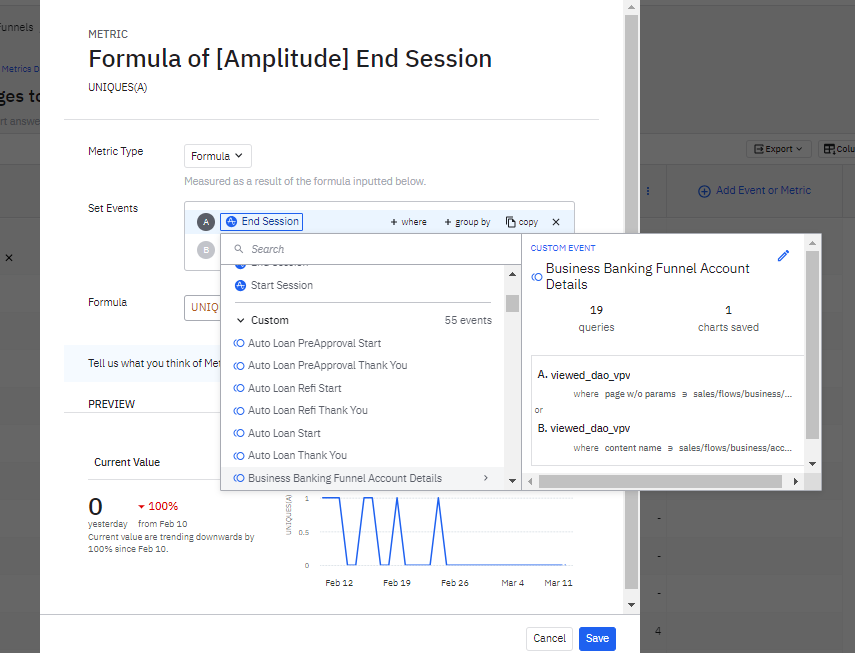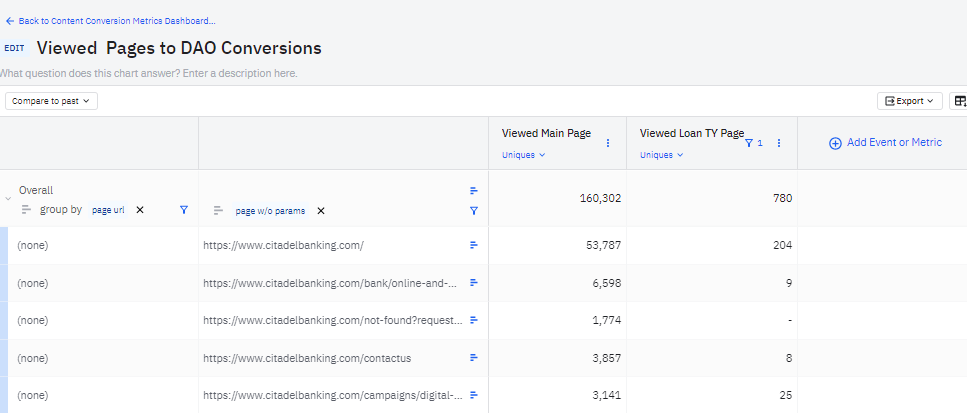@jennru
Are we not allowed to refer to Cohorts we’ve created as part of custom metrics?
For our situation, I’m trying to create a custom metric for the third column in second image below.
The first column is just users to a page.
The second column is users to that page who were part of a cohort. That custom cohort is users who viewed a thank-you page, which is for us our final conversion step.
Third column is intended to be second column divided by first column, as percentage.
Within first image below is the available events, and the event is viewed page filtered to that cohort. Trying to work out some combination that makes that work in some fashion.
Thank you!

